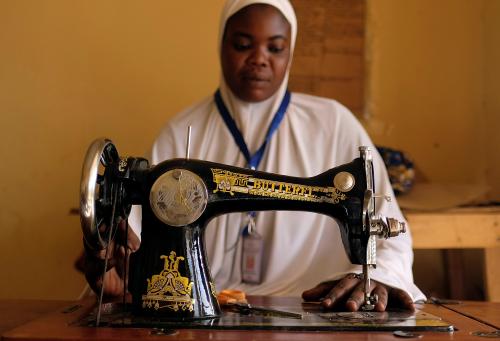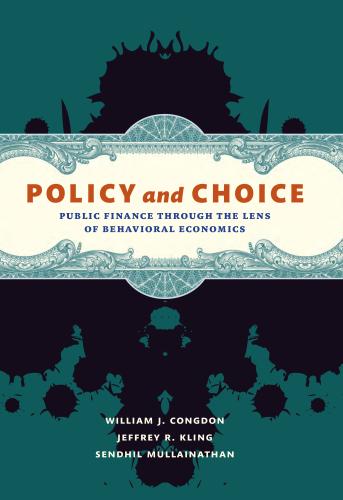The COVID-19 pandemic threatens to wipe out hard-won gains in global development and gender equality. The World Bank reports that the world faces its first increase in extreme poverty since 1998, with between 71 million and 100 million people set to fall into destitution depending on the pandemic’s course, and the crisis affecting women more negatively than men.
Governments are scrambling to contain the economic damage. As of June 12, World Bank data indicates that 195 countries have planned, introduced or adapted more than a thousand safety net payments and other social protection measures for the most vulnerable populations.
There’s a strong case to be made that these payments should be offered digitally. Compared to cash, digital safety net transfers can cut costs and avoid leakage. And digital transfers can help beneficiaries—especially women—strengthen their household decisionmaking power and bolster their labor force participation.
But rapid digitization could create challenges for traditionally marginalized groups like women unless products are well-designed and a robust digital infrastructure is in place. A new report, “Advancing Women’s Digital Financial Inclusion,” prepared for the G-20 Global Partnership for Financial Inclusion by the World Bank, the Better Than Cash Alliance, and Women’s World Banking, examines how government payments can be structured in a way that serves women. The full report highlights 10 policy options to advance women’s digital financial inclusion—including ways governments can make transfer payments safer for women.
Strengthening consumer protections is a key starting point.
Digital government payments offer greater efficiency—but they might expose women to financial services they are unprepared to use. Financial consumer protections reduce the risks from digital finance by making it easier to identify whether a given product or service is fit for its intended use, appropriate for the particular consumer’s needs, fairly priced, and secure, as well as to compare options, seek redress, and ensure women’s financial privacy and safety. Consumer safeguards are also important for building public trust in the financial system.
Clear and easy-to-understand product terms may be especially important for low-income women, given their relatively limited financial experience and capability. A mystery shopper audit of 1,000 microfinance firms in Uganda found that information on cost was inconsistent, inexperienced borrowers received less information than experienced borrowers, and printed materials with product specifications were often missing or in violation of guidelines.
Governments should support comprehensive consumer protections, including requirements to disclose product prices and terms in clear language. Lab experiments in Mexico and Peru found that presenting participants with simplified statements of key facts about credit and savings products was strongly correlated with good financial behavior. By contrast, financial literacy had a much weaker impact on good financial behavior.
Clear and easy-to-understand product terms may be especially important for low-income women, given their relatively limited financial experience and capability. It is especially important to ensure that women have control over any money borrowed in their own name. Effective consumer protection and enforcement on disclosure/transparency of product pricing can also address the risk of fraud.
These findings call into question the emphasis by some consumer protection agencies in emerging markets on expensive financial education programs for women, and make the case for shifting resources toward developing and enforcing effective disclosure and pricing transparency regimes instead.
Governments should develop strategies to promote digital skills and financial capability for women.
The evidence for traditional classroom-based financial education is underwhelming. Interventions to enhance financial capability should leverage teachable moments, such as when women are receiving government payments or acquiring financial products and services.
Technology—like text messages—can provide information cheaply and improve financial behavior. For example, U.S. consumers participating in debt management programs were more likely to meet their monthly payments when they received low-frequency, task-oriented text messages prompting them to take action.
Governments could subsidize entertainment that links emotions and information. In Colombia, rural recipients of conditional cash transfers, who were mostly women, were loaned tablets loaded with entertaining content to boost their financial capability; positive outcomes in financial health were still observable two years later.
Evidence suggests that financial training is more fruitful when provided during moments when women have a specific reason for learning financial skills. For example, researchers who provided financial training to migrants and their families found that the training had positive impacts on financial knowledge and behavior such as savings.
Using defaults can improve financial behavior as well. In India, when researchers gave people identical weekly payments in cash or into a savings account, the group with accounts dramatically increased savings through a default effect. Evidence also suggests that default effects can improve retirement savings.
By enacting consumer protections and investing in appropriate financial education, governments can help bring relief to women suffering from the coronavirus recession—and create the basis for higher financial inclusion for women in the future.










Commentary
COVID-19 pandemic shows the need to strengthen digital safety nets for women
July 31, 2020